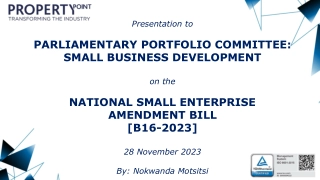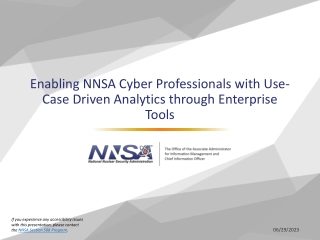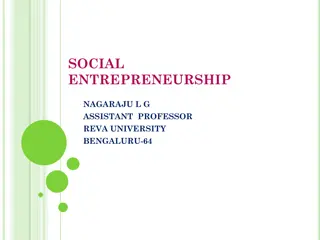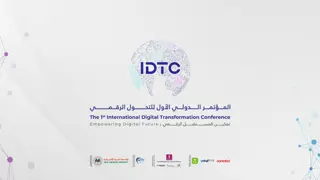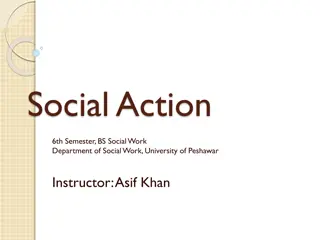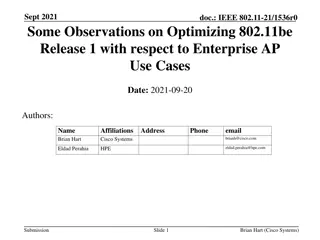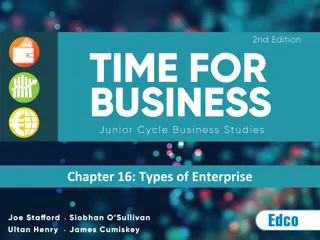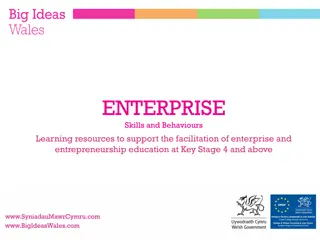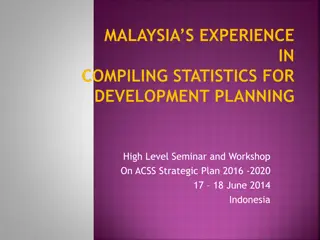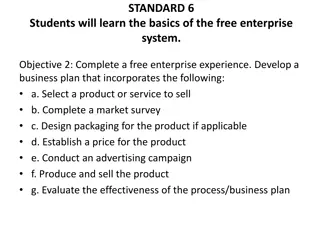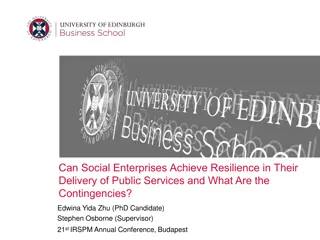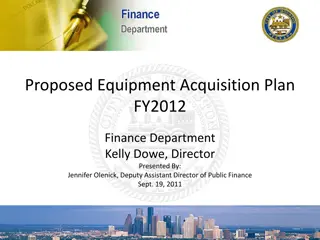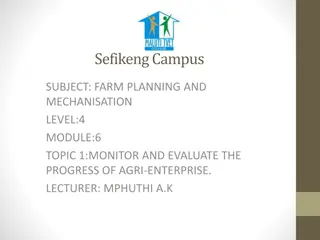Comprehensive Social Enterprise Plan for Impactful Transformation
A social enterprise plan is essential for translating innovative solutions into tangible outcomes. From executive summary to funding requests, it encompasses key elements like problem identification, theory of change, target market, competition analysis, partnership building, financial planning, risk assessment, team plan, and impact evaluation. Identifying target groups and understanding competitors are crucial components for successful implementation.
Uploaded on Nov 22, 2024 | 2 Views
Download Presentation

Please find below an Image/Link to download the presentation.
The content on the website is provided AS IS for your information and personal use only. It may not be sold, licensed, or shared on other websites without obtaining consent from the author.If you encounter any issues during the download, it is possible that the publisher has removed the file from their server.
You are allowed to download the files provided on this website for personal or commercial use, subject to the condition that they are used lawfully. All files are the property of their respective owners.
The content on the website is provided AS IS for your information and personal use only. It may not be sold, licensed, or shared on other websites without obtaining consent from the author.
E N D
Presentation Transcript
THE PLAN ELEMENTS Social enterprise plan consists of many elements that guide you through the thinking in transforming your innovative solution into reality. It basically connects your inputs requirement all the way to the final impact mission. Without the plan, you will have a messy project implementation nightmare even you ve somehow got financed
The Plan Elements 1. Executive summary 2. The problem Vision, mission, 3. value Theory of change 4. The solution Social impact 5. Target market 7. (Social) marketing 6. Competition 8. Partnership 11. Impact monitoring & evaluation 10. Financial plan 12. Risk and opportunity 9. Team plan 13. 14. Funding request Implementation plan
Executive Summary Here you should provide a summary of the plan so that the reader could understand the key elements of your whole social enterprise right away. You can actually work on this section after you have finished all other plan elements. You should outline briefly your... Vision, mission, value Theory of change The solution Your target and how you would access them Partnership Finance Evaluation
Identify and give details on the target group of your social enterprise. They are those who you will make an impact with. You should exhaustively segment them into differentiated groups as well as classify which group is primary target and which is secondary. Information about their size, value, challenge/opportunity and other notes should also be provided.
In providing your social products/services, you actually have competitors providing similar value. Although in social development you are not in cut-throat competition, but by understanding who are providing similar value to your target groups, it helps you to plan your positioning compare to others in capturing unique value to better addressing your target groups need Your competitors include direct competition, substitutable products/services and potential entrants. Complimentators, or those providing complimentary services are equally important.
Any enterprises ultimate clients that are critical to their survival fall into two groups. As in business enterprise where the two are customers and investors. Social entrepreneurs need to be equipped with a two pronged marketing approach in serving their target users group and donors/investors.
These are people and organizations that care about your mission. You share the similar goal to them. They might be in the field longer than you, they might have competency that you can t match. What is important is to identify and learn how to work together in order to achieve synergy, i.e. the whole impact of partnership is greater than the sum of its parts. Partnership only make sense when together you can achieve something that each of you can t do it alone.
Social enterprise consists of individuals, they are the team that make or break everything. Team plan is among the most important element in planning as talent is everything. The team plan consist of at least three parts, the competency plan, the core team and the advisors/board.
The planning and management of your money or financials are among the most critical tasks in determining whether the social enterprise would be cost- effective and sustainable. There are at least three elements in social enterprise financial plan to consider : the budget, the fund-raising plan the revenue-expense projection.
REVENUE-EXPENSE PROJECTION
In social enterprise management, measuring your performance allows you to learn much more about how your idea performs in the real world. A Logical model (LM) allows you to link your inputs, outputs, activities, outcomes and goals together. For evaluation purposes, the most important basic task is to be able to logically link your activities, outputs, short-term outcomes, intermediate outcomes and final goal together. Executive summary The problem Vision, mission, value
There are many other evaluative techniques such as a more comprehensive logical modeling and theory of change, as well as balance score-card that allow you to integratively measure operations, financial, customers and learning/growth perspectives. What outcomes are you trying to achieve for your target population? How will you measure whether you ve achieved these outcomes? What are your performance targets? What data will you collect and how will you collect it? How will you use the results for learning and reporting? No matter which technique you will be adopting, the key is to be able to answer the following questions
Identify potential risks and opportunities that will affect your plan. Try to predict and imagine the potential risks that could create a minor or major problem for your social enterprise. Also, think of the opposite, what opportunities might excel the ability to achieve your mission and scale the impact.
The Work Breakdown Structure (WBS) is a tool that can help you develop estimates, assign personnel, track progress, and show the scope of project work. Through this tool complex activity is subdivided into several smaller tasks. This can be continued until the activity can no longer be subdivided.
A Gantt chart can tell you what has to be done the activities or tasks how long each activity will take in what order each activity has to happen what the costs will be for each activity who is going to be responsible for the activities Gantt Charts are the basic bar chart that most people are familiar with. Pros: Simple to construct, easy to read, an effective way to communicate with team members what they need to do in a given time frame. Cons: Difficult to assess the impact of a change in one area on the rest of the project.
provides information on how you are requesting funding from different donors/investors. Funding Request You could restate the budget and break it down to the part requesting for funding from Youth Social Enterprise Fund and other donors/investors . Status of each request should be described as well.


